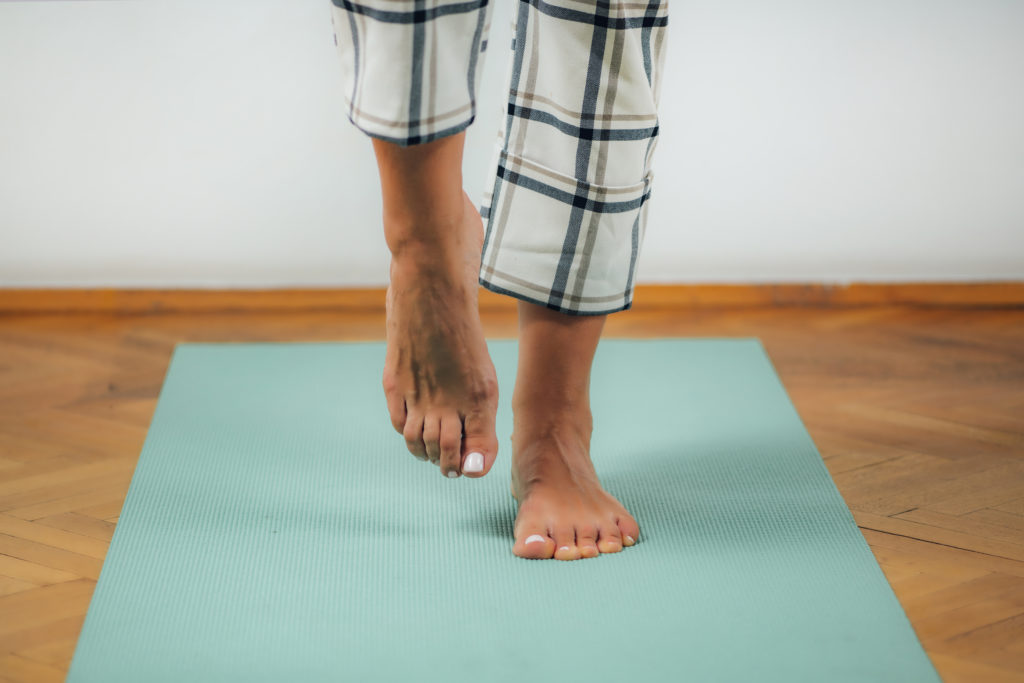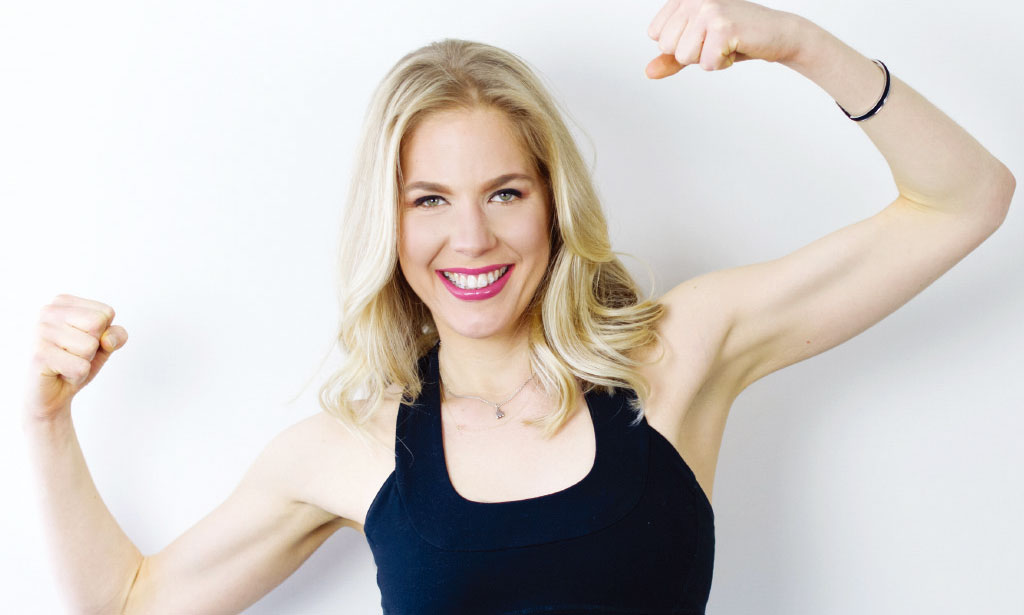Strong Feet and Ankles for Better Running

“Strong feet” may not be the “sexiest” of fitness goals, but it is an important one, nonetheless. I resisted intentionally strengthening my feet and ankles for years. I thought, “I don’t need to devote dedicated time to lifting my toes, balancing on one leg, etc .… That part of my body will just get strong through the act of running.” Yes … and no. Running is extremely hard on the body. Your musculoskeletal system must be strong enough to dissipate up to six times your body weight every time your foot hits the ground. Plus, running is a single-leg activity. Unless you want injuries up the chain—think hips and knees—your body must be strong enough to control itself on one leg. We are only as strong as our weakest link … and for many of us our feet, ankles, and balance are our weak links!
As I always tell my clients, “don’t run to get into shape; get in shape to run.” We have to earn the right to run!
Don’t ignore your feet and ankles!
“Get in touch with your feet” exercises
Triangle Toe Lifts
Standing on your right leg, engage your right butt cheek. Make sure your knee is not caving in; keep the kneecap in line with your middle toes. Pay attention to your right foot. Weight should be evenly distributed between the ball of the big toe, the ball of the little toe, and your heel. Keep your arch lifted. Maintain this position as you lift your right toes up and spread them. Leave the ball of your foot on the floor. Lower and repeat 15 times. Then switch sides. To make it harder, lift the left leg as you spread the toes of the right foot and vice versa.
Toe Lifts
Standing with your legs shoulder-width apart, micro-bend your knees. Lift your big toe up and down. Keep your other toes still. Then, hold your big toes down and lift your other four toes off the ground. Repeat each 10 times. Keep your core engaged. If you need to, sit down, and use one foot to hold the toes of the other foot down to help teach your brain how to move your toes independently.
Heel-Toe Walks
Start standing. Place your right heel on the ground in front of you. Flex through your toes so the next portion of your body to touch the floor is the ball of your big toe. As you transition to balancing on your right toes, lift your left foot off the floor. Try not to roll your foot in or out. Balance for a moment. Repeat by placing your left heel on the floor in front of you. Repeat 10 times.
Balance and Proception
When it comes to your feet, it’s not just about strength. It’s about balance and proprioception.
Balance training improves the feedback loop (proprioception) between your body and your brain. This loop allows your brain to know where your body is positioned in space, thus allowing your brain to instruct the body to “turn on” specific muscles. As a runner, proprioception is critical. It is the tool that allows your brain to know what type of surface you are running on and where your feet are relative to your knees, hips, etc., and thus what muscles should be turned on (and off) throughout your body.
By challenging and training your balance, you fine-tune your proprioception. The better your brain and lower legs communicate, the better able you will be to “right” yourself on uneven ground, quickly and subtly swerve around a tight corner, or rapidly swerve around an oncoming bicyclist!
Pepper balance training into your daily life. Try balance moves as you wait for the kettle to boil or brush your teeth.
Balance Series
- Stand on your left leg and lift your right leg off the ground. Hold for five seconds. Lower the foot but don’t touch down. Repeat three to 10 times, then switch legs.
- Repeat A while rotating your head over toward the lifted knee.
- Repeat step B while closing your eyes.
Drunk Walks
Step your right leg in front of the left as if you are walking on a tight rope. Then step left in front of right. Walk next to a wall in case you wobble but try not to use it. Think core and posture — chest out and head looking forward. Pause on every third step and hold the position. To challenge yourself, try closing your eyes.
When Strength Training
Add a balance component to traditional exercise (lunges, bench press, etc.) and move in multiple directions.
A. Incorporate unstable equipment, such as a Bosu, resistance ball, foam roller, or balance board into your routine.
- Instead of doing bench presses on a bench, do the exercise with your head and shoulders on a stability ball, your feet on the floor, and your glutes lifted in a bridge.
Instead of doing push-ups on the floor, put your hands on either side of a BOSU, with the flat side up. Try to keep the BOSU stable as you do your push-ups. - Instead of doing a crunch on the floor, lie lengthwise on a foam roller. Do a mini curl. As you curl, try to lift one leg off the floor without falling off the roller.
- Use a BOSU to do step-ups, sideways step-ups, squats, and lunges.
B. Move in multiple directions.
- Move your squats and lunges in different directions. Or try exercises that are inherently multi-directional like curtsey or hockey lunges.
Final Thought
When training balance, allow yourself to (appropriately) wobble outside your comfort zone. Compare balance training and learning any new motion or sport to weightlifting: If you lift five pounds forever, you will never get stronger. If you can already stand on one leg easily, that is your balance equivalent of lifting that five pounds. If you can already do a front crawl, that is your equivalent of lifting five pounds while swimming. Balance exercises you can already do are not balance exercises. A sporting technique you can already do will not push your brain to learn. To improve, you have to—within safe limits—work outside your comfort zone. Be safe but challenge yourself. Think gradual progression.

